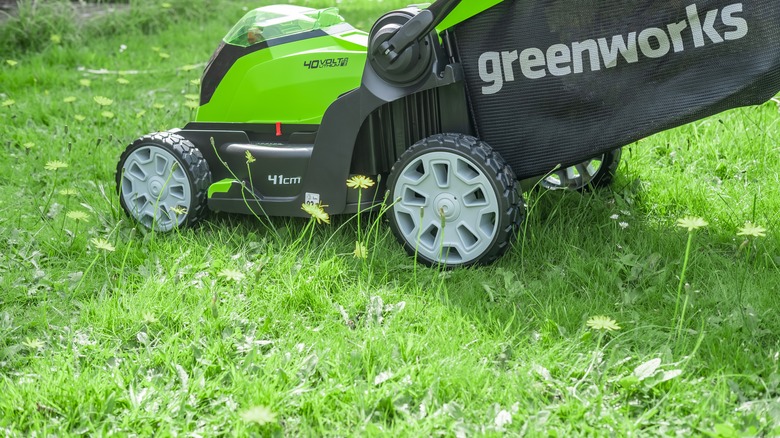Watching your lawn get infiltrated with dandelions and foxtail is never a good feeling — even more so when you are a regular at tending to your green expanse. Yet here they are, turning your landscape lackluster and making you wonder if it’s time for another weed-killer application. However, there’s more to weed control than meets the eye. Surprisingly, your poor mowing practices may actually be fueling the growth of weeds, as pointed out by HGTV. Cutting your grass blades too short, or scalping, exposes the soil to light and heat and encourages the growth of pesky invaders, such as crabgrass, who then take over the sparsely-covered lawn.
But following the proper mowing method can help reverse your garden’s fortunes. Raising your mower’s height to its highest setting when trimming the grass ensures that your verdant expanse remains tall, albeit a little shabby. As long blades prevent the weed seedlings from accessing sunlight, they can’t germinate and spread. Moreover, taller grasses develop deeper roots, paving the way for healthier, lush lawns.
Practice the right mowing method

There is no denying that cutting your lawn cover short makes for a fetching resemblance to a golf course fairway, but it does a poor job of keeping weeds at bay. As grass height is directly related to its root system, keeping grass blades longer assures the development of a strong root system. It enables higher moisture absorption, making the turf more drought-tolerant. Moreover, a higher density of green shades the soil, which reduces the sprouting of new weeds and the need for herbicide application. So, to control weeds, you must keep your grass taller by mowing at a greater height, especially during summer.
While mowers are commonly used at their top setting, which ranges from 3.25 to 4 inches, it may be ill-suited for some grass types that flop over when maintained too tall — sticking to under 3.5 inches is ideal in such cases. However, the lawn mower’s height should be lowered during the fall in areas experiencing extremely cool temperatures to prevent the formation of snow mold on your green carpet.
Other mowing tips to prevent weed overcrowding
Your mower’s height also depends on the variety of grass and the season. For instance, cool-season grasses like Rye and Fescue are ideally maintained between 2 and 3 1⁄2 inches, with summer grasses such as Zoysia trimmed at shorter lengths. However, generally, it is best not to cut beyond ⅓ of the grass blade to ensure vigorous growth and avoid weed proliferation. Similarly, depending on the grass’ growing season, trimming the herbage at least once a week during high-growth times may be necessary, lowering it to twice a month when the growth slows.
Additionally, indulging in grasscycling, leaving out the blade cuttings on the lawn during mowing, can help remove weed seeds while meeting over 25% of your soil’s nutrient needs. But be careful about mulching with these clippings during the spring, as invasive weeds like dandelions will instead start mushrooming unless their seedlings are removed completely. Mowing works best for reining in weed growth when these pernicious plants are yet to seed or have only experienced between 2 and 5% flower growth.



